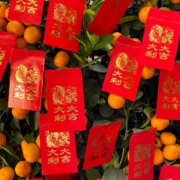Why China’s Chinese New Year Holiday May Not Actually Be 7 Days
This year’s Chinese New Year/Lunar New Year will be coming early, with Chinese New Year Eve falling on the 31st. It is a time for reunion, for festivities and joy as people welcome spring, which is why it is also known as the Spring Festival. The Spring Festival technically lasts for 15 days, but for many people, it simply isn’t realistic to take this many days off. For some countries like Singapore, the Chinese New Year holiday lasts for two days, covering only the first and second day. For China, where most people celebrate Chinese New Year and where Chinese New Year is regarded as one of the most major holidays for the whole country, they may take up to 7 days off… or do they?
Officially, Chinese New Year holidays are 3 days in China, covering the day before, and the first, and the second day. However, arrangements for people to enjoy 7 consecutive days are made via the shifting of work days instead. For instance, as this year’s Chinese New Year holiday falls from 31st January to 2nd February, Monday to Wednesday. Employees will have to work on 29th and 30th January to make up for the days taken up by the 7 days, meaning that they will be working for that weekend. In addition, leaves are also added from Wednesday to Friday, thus allowing them to enjoy the Chinese New Year holiday for 7 days straight (the weekend should be a rest day by default). In other words, part of the 7 days holiday is actually taken from working extra days prior or after, depending on the holiday.
The same goes for other long holidays in China too, such as Labour Day and National Day Golden Week, where additional work days are added before or after the holidays in order to allow a week of consecutive holidays. The Labour Day holidays will be taking place from April 30th (Saturday) to May 4th (Wednesday), with additional work days added to April 24th (Sunday) and May 7th (Saturday). For National Day Golden Week, it lasts from October 1st (Saturday) to October 7th (Friday). Subsequently, October 8th and 9th (Saturday and Sunday) will become working days instead.
What does this mean for the Chinese people? For some, it means strategically taking leaves in order to maximise the length of the break. The phenomenon of “Chunyun”, or “the Spring Festival Travel Rush” marks the travel of millions and millions of people across China, as workers working in faraway cities and students studying outside of their hometown all flock home in order to make it in time for reunion dinner. The Chinese transportation system faces the greatest stress test during these times. However, this means that their holidays would be further taken up by time taken on the road. Hence, some advice that one should also spend their leaves on the 29th and 30th of January, so as to get a head start for those travelling home, or at least, so they would be able to make it in time for the reunion dinner taking place on the 31st, aka Chinese New Year Eve. Alternatively, one could also apply for leave for the 7th of February, thus allowing one to enjoy 8 days of break and the chance to avoid the post-Chinese New Year travelling crowd.
For many, the travelling time is a large part of the reason why the suggestion of extending the full break to 10 days has been repeatedly brought up in government over and over again. Some would also like more time to spend with their family in general, and 10 days would allow them to truly soak up each other’s company before heading back to work/school. Still, there seems to be no sign of the break being extended any time soon.
Overall, there is no such thing as a free lunch. Long breaks are the results of additional working days strategically placed on the weekends. However, with some maneuvering, it is still possible to maximise the break, and take a much-needed rest.
References:
https://baijiahao.baidu.com/s?id=1710584766106120344
https://jingyan.baidu.com/article/08b6a591aaa79655a909226b.html



